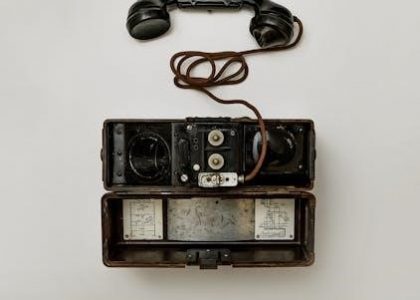Understanding Vehicle Test Drive Agreements
A test drive agreement is a crucial legal document protecting both buyer and seller during a vehicle test drive. It outlines terms, conditions, responsibilities, and liabilities for all parties involved in a private sale.
What is a Test Drive Agreement?
A test drive agreement, often a PDF form for private sellers, is a legally binding contract. It details the terms and conditions under which a prospective buyer is permitted to test drive a vehicle offered for sale; This agreement safeguards both the seller and buyer, clearly outlining each party’s responsibilities and liabilities during the test drive period. Key aspects covered include the duration of the test drive, permitted geographic area, the driver’s licensing and insurance requirements, and procedures for returning the vehicle. The agreement also addresses potential damages or accidents that may occur during the test drive, specifying who bears responsibility. This formal document ensures transparency and protects all parties involved in the transaction.
Purpose and Importance of the Agreement
The primary purpose of a vehicle test drive agreement, especially in private sales, is to mitigate risk for both the seller and buyer. For the seller, it provides legal protection against potential liability in case of accidents or damage to the vehicle during the test drive. The agreement clearly defines the buyer’s responsibilities, ensuring they understand the implications of operating the vehicle. For the buyer, the agreement offers reassurance and transparency. It clarifies the terms of the test drive, preventing misunderstandings and disputes later on. A well-structured agreement protects both parties’ interests by establishing clear expectations and responsibilities. This formalizes the test drive process, creating a record of the agreement and the involved parties. The existence of the agreement can also help in dispute resolution should any issues arise.
Key Elements of a Private Seller Agreement
A comprehensive private seller test drive agreement should include several key elements. Firstly, identification details for both the seller and buyer are crucial, including full names, addresses, and contact information. A detailed description of the vehicle is essential, specifying the make, model, year, VIN number, and license plate. The agreement must clearly state the date, time, and duration of the test drive. Crucially, it needs to outline the responsibilities of the buyer, such as possessing a valid driver’s license and maintaining adequate insurance coverage. Any specific restrictions or conditions should be explicitly mentioned, for example, limitations on mileage or geographic areas. Finally, a clear statement regarding liability for accidents or damages during the test drive, specifying who bears the responsibility, is paramount. Including a section for signatures and dates ensures both parties acknowledge and agree to the terms. The agreement should be easily accessible in a downloadable PDF format.
Legal Aspects of Test Drive Agreements
Test drive agreements offer legal protection for both parties involved in a private vehicle sale. They clarify liability and insurance responsibilities, minimizing potential disputes.
Liability and Insurance Considerations
Liability during a test drive is a critical aspect of a private vehicle sale. The agreement should clearly state who is responsible for damages or injuries that occur during the test drive. Typically, the potential buyer is responsible for any accidents or damage caused while operating the vehicle. However, the seller’s insurance may also play a role depending on the specific policy and the circumstances of the incident. It’s crucial to clarify insurance coverage; does the seller’s policy extend to test drives? If not, the buyer might need to provide proof of their own insurance coverage or agree to waive any claims against the seller in case of damage. This explicit mention within the agreement helps avoid misunderstandings and potential legal disputes after the test drive concludes. The agreement should specify who bears the financial responsibility for repairs or medical expenses arising from accidents, ensuring both parties have a clear understanding of their obligations.
Responsibilities of the Buyer and Seller
The test drive agreement should clearly outline the responsibilities of both the buyer and the seller. The buyer’s responsibilities typically include possessing a valid driver’s license, operating the vehicle safely and responsibly, adhering to all traffic laws, and returning the vehicle to the seller at the agreed-upon time and location in the same condition it was received, barring normal wear and tear. They should also be responsible for any damages or accidents they cause during the test drive, as previously discussed in the liability section. The seller’s responsibilities include providing a safe and operable vehicle for the test drive, ensuring accurate representation of the vehicle’s condition, and obtaining appropriate identification from the prospective buyer before handing over the keys. They should also be fully transparent about any known mechanical issues. Both parties should carefully read and understand the agreement before signing, ensuring they are aware of their respective obligations throughout the test drive process.
Dispute Resolution
The test drive agreement should include a clear and concise dispute resolution clause to address potential disagreements that may arise between the buyer and seller. This clause should specify the preferred method for resolving disputes, such as mediation or arbitration. It’s advisable to outline the process for initiating a dispute resolution, including timelines and procedures for communication between the parties. The agreement should also clearly identify who is responsible for the costs associated with the dispute resolution process. Including a specific jurisdiction for dispute resolution is also helpful for clarity and legal enforceability. Consider specifying whether the resolution process will be binding or non-binding on both parties. A well-defined dispute resolution clause can help prevent misunderstandings and ensure a fair and efficient resolution of any conflicts that may occur during or after the test drive. This proactive approach safeguards the interests of both parties.
Creating and Using a Test Drive Agreement (Private Seller PDF)
A downloadable PDF test drive agreement protects both parties. It simplifies the process, ensuring a legally sound and safe transaction for private vehicle sales.
Essential Information to Include
A comprehensive private seller vehicle test drive agreement PDF should include crucial details to ensure clarity and legal protection. Begin by clearly identifying both parties involved⁚ the seller’s full legal name, address, and contact information, and similarly for the prospective buyer. Accurately describe the vehicle, noting the make, model, year, VIN (Vehicle Identification Number), and any existing damage or defects. Specify the date, time, and duration of the test drive, including the agreed-upon return time. Clearly outline the responsibilities of both parties, including insurance coverage (who is responsible if an accident occurs), mileage limitations, and the condition in which the vehicle must be returned. Address any restrictions on where the vehicle can be driven. Include a section for signatures and dates, confirming both parties’ agreement and understanding of the terms. Consider adding a clause regarding liability for damages or accidents during the test drive, explicitly stating who bears the responsibility. Finally, it’s advisable to include a statement acknowledging that the buyer has inspected the vehicle and is aware of its condition.
Step-by-Step Guide to Filling Out the Form
First, accurately complete the identifying information sections for both the seller and buyer, ensuring all names, addresses, and contact details are correct. Next, meticulously detail the vehicle’s specifications, including make, model, year, VIN, and odometer reading. Clearly state the agreed-upon date, time, and duration of the test drive. Define the geographical boundaries for the test drive, specifying permitted driving areas. Carefully outline each party’s responsibilities and liabilities. If applicable, note any existing damage to the vehicle and document it clearly within the agreement. Both parties should then review the complete agreement carefully to ensure mutual understanding. Finally, both the buyer and the seller must sign and date the agreement in the designated spaces. Retain a copy of the signed agreement for your records. Remember to clearly outline who holds responsibility for insurance coverage during the test drive. A witness signature is recommended for added legal security. Consider having the buyer provide a copy of their driver’s license for verification.
Where to Find and Download Templates
Numerous online resources offer free downloadable test drive agreement templates in PDF format. Websites specializing in legal forms and documents often provide these templates, ensuring ease of access. Many general legal websites also offer these forms, often with customizable fields to tailor the agreement to your specific needs. Remember to carefully review any template you download before using it, ensuring it accurately reflects the legal requirements of your jurisdiction. Always double-check the template’s clauses related to liability, insurance, and return of the vehicle. Some websites may charge a small fee for premium templates with advanced features or enhanced legal protection. You can also find templates through online legal directories or by searching specifically for “private party vehicle test drive agreement PDF.” If you’re unsure about the legality or completeness of a template, consult with a legal professional before using it to ensure its suitability for your specific circumstances and location. Using a reliable and legally sound template is crucial to protect your interests during the transaction.
Safety Precautions for Private Test Drives
Prioritize safety during private test drives. Verify buyer identification, ensure valid driver’s license, and establish clear communication for vehicle return.
Protecting Yourself and Your Vehicle
Before handing over your keys, take proactive steps to safeguard both yourself and your vehicle. Thoroughly inspect the vehicle’s condition, noting any pre-existing damage, and document this with photographs or a detailed written description. This documentation serves as crucial evidence should any disputes arise regarding damage incurred during the test drive. Consider requiring a copy of the prospective buyer’s driver’s license and insurance information. This verification helps ensure the individual is legally authorized to operate a motor vehicle and has sufficient coverage in case of an accident. It is also advisable to accompany the buyer on the test drive, observing their driving behavior and ensuring they adhere to traffic regulations. By actively participating in the test drive, you can better assess the buyer’s driving skills and mitigate potential risks. Remember, your safety and the condition of your vehicle are paramount. Following these precautions can significantly reduce the likelihood of unpleasant incidents.
Verifying Buyer Information
Before allowing a test drive, take steps to verify the prospective buyer’s identity and driving credentials. Request a valid driver’s license and confirm its authenticity. Note the license number, issuing state, and expiration date. Compare the photo on the license to the individual to ensure they match. If you feel uneasy, ask for additional identification, such as a passport or utility bill, to cross-reference their details. A quick online search of their name might uncover any significant red flags. Consider requiring proof of insurance. Request the buyer’s insurance information, including the name of the company, policy number, and coverage details. Verify the validity of this information by contacting their insurance provider if necessary. This verification process helps to mitigate risk and protects you from potential liability. Remember, thorough verification can prevent fraudulent activities and ensure a safer test drive experience for everyone involved.
Post-Test Drive Procedures
Following the test drive, conduct a thorough inspection of your vehicle. Note any new damage or discrepancies not previously documented. Carefully compare the vehicle’s condition against the initial assessment recorded in the test drive agreement. Take photos or videos of any new damage as evidence. If the buyer expresses interest in purchasing the vehicle, proceed to discuss terms, price, and payment methods. If the buyer doesn’t want to proceed, thank them for their time and return the test drive agreement. Ensure all personal belongings have been removed from the vehicle. Make copies of the signed agreement for your records. Keep the original agreement in a safe place. If any damage was discovered, communicate this to the buyer promptly. Document all communication, including emails and phone calls. If the buyer is responsible for the damage and refuses to accept liability, consult legal counsel for advice on how to proceed. Remember, clear communication and meticulous documentation are key throughout this process.




